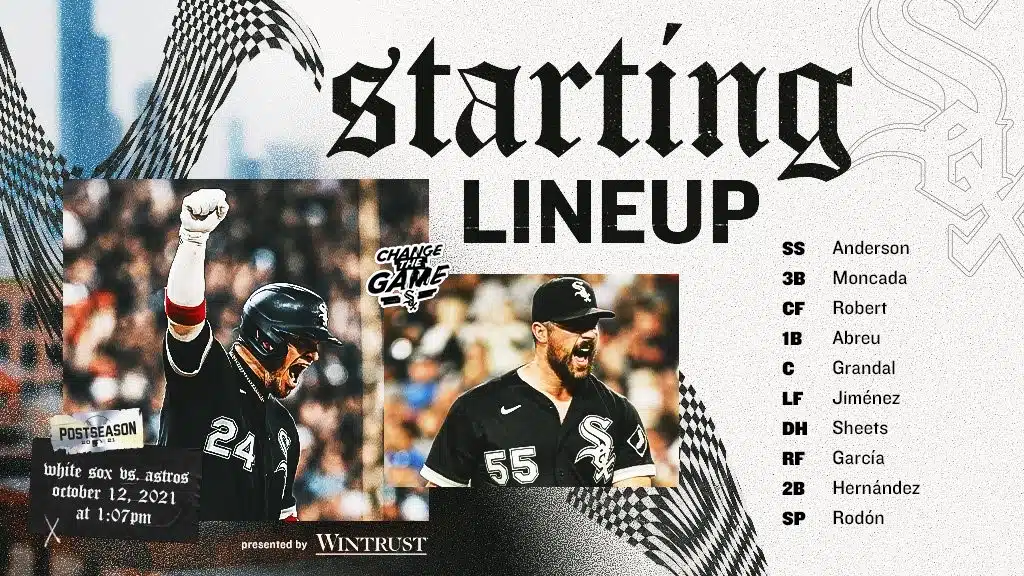Offering an estimated guess, I’d imagine 99 out of 100 fans reading this article would answer a resounding, “YES.” Everyone who does so would all be more than justified in feeling that way, as the White Sox have begun to wear down a measly thirteen games into the 2023 season. First, it was Eloy Jimenez with a surprised IL stint, then Joe Kelly for a freak groin aggravation, and now Tim Anderson is out for a few weeks while Yoan Moncada deals with day-to-day soreness.
This all surely elicits bad memories of the last two seasons for Sox fans, as seemingly frequent injuries to key players hampered the team in both 2021 and 2022. While injuries certainly didn’t excuse the South Siders’ massively disappointing 81-81 record a year ago, they didn’t help.
But, statistically, are the White Sox really soft? Are they injured a lot more than other teams? Let’s be honest, every fan of every sports team swears that their franchise is CURSED. Thankfully we have some good data to answer the question, so let’s figure it out.
The Big Picture
With a tip of the hat to Spotrac, we can quantify a lot of this.
In 2021, the White Sox spent the sixth-least cumulative amount of time on the injured list, with a grand total of 1,224 days. That was highlighted primarily by injury time of 50 days or longer by Eloy Jimenez, Luis Robert, Nick Madrigal, and Yasmani Grandal. Ultimately, it equated to the ninth-least amount of money spent on IL players, with $17,649,819 allocated to wounded soldiers. Considering also that Chicago got all of their key players back before the playoffs, 2021 was actually a pretty favorable year health-wise for the team.

2022 was a slightly different story. The South Siders racked up 1,405 cumulative days on the injured list, placing them dead in the middle at fifteenth amongst their counterparts. Financially, though, the picture was a bit worse, as the White Sox spent $33,626,401 on injured players, good for tenth-most in the majors. At the risk of bringing back painful memories, the following pieces spent 50 or more days on the IL in 2022: Garrett Crochet (whole season), Danny Mendick (season-ending), Aaron Bummer, Tim Anderson, Eloy Jimenez, Lance Lynn, Yoan Moncada, Joe Kelly, and Yasmani Grandal.
Looking at those overall numbers, it appears the Sox are very average when it comes to injury luck. The last campaign was on the rough side, but they still barely broke the top 10 in the two major metrics.
Let’s look further though.
Digging Deep
One key caveat is that the White Sox payroll, seventh highest in MLB in 2022 and twelfth in 2023, is extremely balanced. So, the financial figure is misleading, because that money likely is distributed between more injured players for the Sox than many other teams. Many of those clubs that rank as more unlucky money-wise only place that high because a couple of super expensive pieces went down.
The Angels, for example, mostly ranked high in injury-allocated cash because of Anthony Rendon, whose 118 days on the IL accounted for significantly more than half of the team’s financial loss. While Rendon is a great player, it’s much more taxing on the White Sox to replace Grandal, Jimenez, and one of Moncada/Anderson in the lineup for weeks at a time than it is for L.A. to solve for one player. It’s just one example, but when applied to the whole league, it would figure that the 2022 Sox were impacted more than at first glance.
Still, there’s a further element to “softness” and injury luck that’s missing here. If a player has one IL stint for a month or two, then comes back and stays healthy the rest of the year, it’s manageable. But if someone has three separate stints of two weeks, the impact is magnified. Players keep having to be called up and sent down, the lineup shakes up, and the player in question struggles trying to establish a rhythm. It’s this type of situation that seems to summarize the White Sox, and a quick glance at a segment of last year’s injury totals highlights this.

Ten stretches on the 10-day IL between four players! There were easily 140+ different lineups used by the Pale Hose last year. Though some of that can be attributed to Tony La Russa’s decision-making, it also reflects the staggered nature of injuries endured by the club.
These two caveats lead to one final key metric that should most capture the White Sox’ “softness”: total injury list stints by starting players (no bullpen arms or bench bats). Let’s take a look.
The Dirty Math
Finding injury totals by player is burdensome, so for simplicity, we’ll just compare the 2022 White Sox to the rest of the American League. I’ll also include my judgment of how many were key players (obviously subjective, but we all know Jose Ramirez is a key player, and Myles Straw is not).
So, here’s the final tally, assisted once again by Spotrac (an injured list stint counts as an injury):
2022 American League
| Team | Injuries to Key Players | Injuries to Starting Lineup | Injuries to Starting Rotation |
| Minnesota | 17 | 13 | 11 |
| White Sox | 16 | 13 | 5 |
| Tampa Bay | 15 | 14 | 5 |
| Boston | 11 | 8 | 9 |
| Los Angeles | 10 | 11 | 2 |
| Detroit | 10 | 9 | 8 |
| Kansas City | 9 | 7 | 5 |
| Seattle | 8 | 13 | 1 |
| New York | 8 | 8 | 4 |
| Oakland | 8 | 10 | 3 |
| Texas | 7 | 4 | 7 |
| Cleveland | 7 | 5 | 5 |
| Houston | 7 | 6 | 3 |
| Toronto | 6 | 4 | 4 |
| Baltimore | 5 | 3 | 4 |
Now THAT seems more on brand. Third-highest in total injuries and second in key injuries, and only the poor Twinkies had it worse in both categories. Clearly, the White Sox aren’t some crazy soft anomaly of a baseball team, but they’re also much less healthy on any given day than your average squad.
So, there are a couple of possible conclusions to draw based on your preferred method of evaluating softness. The 360-degree view makes it seem like the Sox are an average team health-wise, but examining the mere quantity of injuries and the significance of the victims tells something different.
There’s also the question of whether the players on the South Side are truly “soft”, or if they’re just unlucky. Perhaps, even, the organization has subpar trainers and performance professionals. Also, note that 2020 and 2021 were relatively healthy campaigns — maybe Sox fans are yielding to recency bias.
‘ll leave that portion of the debate up to the readers, but I think the truest answer lies somewhere in the middle.
Follow us @SoxOn35th for more throughout the season!
Featured Image: Thomas Shea-USA TODAY Sports


I realize injuries are part of the game, but did the front office really think the guys they were counting on to have bounce back seasons would suddenly and magically stop getting injured? I remember waiting for Eloy and Luis to come up from the minors and almost every time I checked their status, one or both were out of the lineup because of injury. Moncada has only had one year where he played the majority of the games. Now Yasmani is the guy who trips over himself every few weeks and the process starts over- out for a month or so, then two to three weeks to find their rhythm, only to pull another groin or calf while doing so. Bottom line is you can’t count on these guys to bounce back! And in the rotation we have Bummer, Kelly, Crochet, and Kopech who can’t stay healthy. Show me all the stats you want, but your last chart tells the story. They’re counting on too many guys who can’t play a full season, or even 75% of it.
Glass.
Cal Ripken played multiple years without missing a single game. I struggle with our infielders going on the IL with “soreness”. Tape an aspirin to it and get yourself on the field!
How many fragile WSox players besides Eloy, have spent some time on the IL, year after year?
TA, Moncada, Grandal, Robert, Kopeck, Crochet, Kelly, Burger, Engel. Did you even read the article?